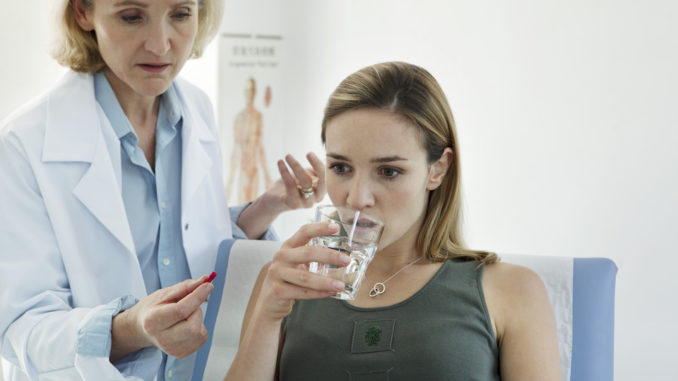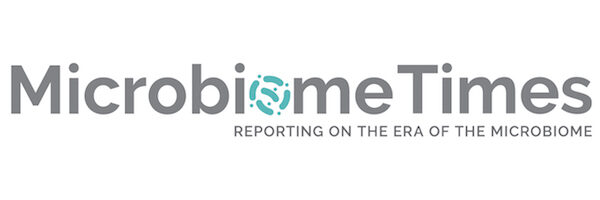
Many individuals living with chronic disease—whether it’s asthma, allergies, atopic dermatitis, type 2 diabetes, or another condition—readily confirm their therapeutic options leave a lot to be desired. Even if an existing drug product deals adequately with their symptoms, it often comes with undesirable side effects or a compromised quality of life. The news is welcome, then, that the medical community is increasingly recognizing the potential of a new kind of therapeutic: microbiotic medicinal products (MMPs), including live biotherapeutic products (LBPs).
Although Microbiotic Medicinal Products (MMPs) still need to be defined from a regulatory standpoint, they may be generally understood as a broad category of biologic medicinal products derived from the microbiome. One subtype of MMP, however, called an LBP, has been clearly identified and defined by both the United States Food and Drug Administration (FDA)and the European Pharmacopoeia. The two organizations use slightly different definitions of LBP, but in both cases LBPs are understood to be biological products containing live microorganisms, which are used to prevent, treat, or cure disease in humans. In other words, they are living medicines—and ones that may confer unique health benefits.
Demonstrating safety and efficacy has not been straightforward for microbiome-focused companies that have already embarked on LBP clinical trials. Many in the industry desire a more focused approach to the challenges—so an organization called PRI, a financially-independent European non-profit entity dedicated to clarifying the regulatory and scientific requirements for the commercialization of microbiome-based drug products in humans for the EU Market, plans to convene stakeholders in a December task group to discuss the appropriate design of clinical trials in LBP development.
Unique drug products require a new regulatory framework
Dr. Haymen Girgisis Chief Medical Officer at BIOSE, a company that is considered a pioneer in development and manufacturing of LBPs. Girgis notes that while the drug regulatory framework is well-suited for traditional drug products, it is less appropriate for LBPs.
“Live biotherapeutic products are very specific by their nature,” Girgis says.“We are not working with chemically synthetic molecules, but with liveorganisms. And these live organisms are in intimate interaction with their host.”
Prof. Jelena Héléne Cvejic, Director of Translational Science at Accelsiors CRO, an organization with extensive experience in the clinical trials field, emphasizes that the many forms of interaction between an LBP and its host can directly impact the trial investigators’ ability to show efficacy and safety. For instance, the successful conduct of an LBP clinical trial must take into account the complexities of a product’s potential mechanism of action.
“The specific mechanism of action of an LBP highly depends on the characteristics and composition of the LBP, as well as on the targeted indication,” says Cvejic. “In general, LBPs have a beneficial effect on the human body through interaction with the existing microbiome—which highlights the impact of the host microbiome status. Due to that interaction, LBPs are able to influence the host microbiome composition, which is currently being scientifically linked to a specific disease or the overall condition of the organism.”
A new clinical trial paradigm is thus required if indeed the mechanism of an LBP has the potential to be (partially)indirect—and therefore not dependenton the LBP alone,but rather on the microbial ecosystem or the host characteristics.
Cvejic adds,
“LBPs could also express their activity through chemical compounds which are either produced or specifically modified by the LBPs themselves. The produced compounds and metabolites might depend on the available substrates, endogenous as well as exogenous; the latter pointing out the influence of dietary patterns. These could have a crucial role on the condition of the host.”
Challenges in designing and carrying out LBP clinical trials
When it comes to designing clinical trials for LBPs, Girgis says the crux of the problem is,
“Applying to the letter all the existing guidelines and recommendations for clinical trials is challenging; it could impair the demonstration of efficacy, meaning we won’t have any market authorization for any of these drugs.”
According to Cvejic, several factors make LBP clinical trial design challenging, no matter what the indication: foremost among them, tracking the environmental factors that potentially contribute to efficacy. She says,
“Eligibility criteria for the patients’ enrollment in these trials must be written in a way to take into consideration additional points which can influence LBP interaction with the host, such as lifestyle, dietary habits, and environmental factors.”
Cvejic also notes that dose-response curves may be different with LBPs.
“These products are supposed to act locally either in gut or skin or other organs. Hence, in case of these products we cannot talk about bioavailability. If they would absorb and disseminate via circulation, this would be a problem rather than a benefit.”
Nor do the traditional pharmacokinetics parameters apply—since tracking the products’ ‘life’ and ‘paths’ in human tissues and bodily fluids is not possible in the same way as with a conventional drug.
Not even safety is straightforward for this class of product that medical professionals would perceive to be relatively safe. Cvejic says,
“In relation to the toxicity of the product, for LBPs it is not, as it is for conventional drugs, directly related to the dosage. Instead it highly depends on the host status. Consequently, safety issues could be produced in certain cases even at low dosage of a product.”
The PRI Clinical Trials Task Group
The task group convened by PRI in December will identify key questions relevant to MMP/LBP clinical trial design on the basis of analyzing existing designs for these products, and propose some general approaches for optimizing the success of trials.
Girgis looks forward to the discussion, he says, because “People with different expertise and background are coming together in order to share each other’s experience so that we can have some sort of global approach.”
Cvejic adds,
“A multidisciplinary approach as well as the activities of different ‘players’ such as researchers, pharma developers, CROs as service providers, regulatory authorities, and even patients are needed in the complex and specific process of LBP development.”
Girgis emphasizes the ‘double aim’ of the task force: to share knowledge among LBP developers, but also to give feedback to regulatory bodies on the special framework required for LBPs.
The PRI Clinical Trials Task Group, which will be held on December 3rd, 2019 in Paris, France, is open to all PRI member companies planning or developing MMPs (by themselves or with partners) for the European Union market. The organization welcomes companies interested in getting involved in the December discussion group to contact them: contact@pharmabiotic.org
“Shaping the LBP clinical trial process through all stages—from protocol development to the product registration by respecting the specificity of the tested product as well as the characteristics of the targeted indication—is fundamental in creating an efficient and safe new therapeutic,” says Cvejic.


